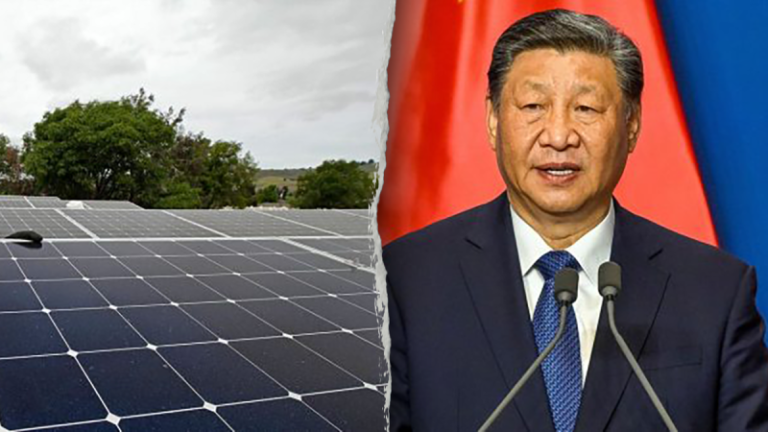Canada One Mining Corp. (TSXV: CONE) (OTC Pink: COMCF) (FSE: AU31) (‘Canada One’ or the ‘Company’) is pleased to provide an exploration update following the Phase 2 exploration program conducted at its 100% owned Copper Dome Project, (‘Copper Dome’, ‘Project’ or ‘Property’), Princeton B.C.
2025 FIELD PROGRAM HIGHLIGHTS
- Crews established 53 field stations with full metadata across the property, systematically documenting geological observations to contextualize mineral showings in relation to property-scale and regional geology.
- A total of 29 rock samples were collected during the first phase of exploration and have been delivered to the laboratory for analysis.
- Copper sulphides, including bornite and chalcopyrite, were observed in several rock samples. Assay results are pending.
- Key alteration assemblages observed are indicative of proximity to porphyry centers.
Peter Berdusco, President and CEO of the Company commented: ‘We are thrilled with the Phase 2 exploration work, which identified numerous samples containing visible copper sulphide minerals. The Friday Creek zone emerged as a standout area of interest, and additional work is planned to further evaluate its mineralization footprint and potential within the broader Copper Dome system. Observing bornite in hand sample is a strong indicator of potential porphyry systems, and the project’s proximity to the Copper Mountain Mine only strengthens the geological narrative. The visible copper mineralization and potassic alteration signatures observed in these samples provide Canada One with a solid foundation to advance exploration and refine its 2026 objectives at the Copper Dome project.’
Exploration Summary
Crews completed the Phase 2 field program at the Copper Dome Project, with a primary focus on visiting historic MINFILE occurrences and applying modern exploration insight to reassess legacy data and descriptions. All documented MINFILE locations were successfully visited, and 53 field stations were collected with full metadata at each site. A total of 29 rock samples were submitted for analysis at ALS Geochemistry – Kamloops, and the Company expects an approximate four-week turn around on results. Historic workings and related infrastructure were mapped, documented, and georeferenced, with access conditions recorded for each location (See Figure 1).
The Company is encouraged by early field observations, which include chalcopyrite stringers, mineralized breccia cement, and bornite clots and stringers (see Figures 2-4).
Figure 1: Overview map of the Copper Dome project sowing sample and data stations as well as project infrastructure.
To view an enhanced version of this graphic, please visit:
https://images.newsfilecorp.com/files/10074/275866_34fbc694940758d3_002full.jpg
The Friday Creek Zone, located on the western portion of the claim block, hosts strong potassic alteration and visible chalcopyrite and bornite mineralization, commonly occurring with little to no pyrite. Alteration across the zone is similarly encouraging, with moderate to strong K-feldspar and biotite alteration commonly observed near the copper sulphides. This alteration and mineralization assemblage is a recognized indicator of prospective porphyry copper systems, suggesting that the outcrop may lie within the system’s central potassic zone.
The discovery of in-situ bornite at the Friday Creek zone is extremely encouraging. Bornite is a copper-bearing sulphide mineral (chemical formula Cu₅FeS₄, containing ~63% copper by mass), and its presence is commonly associated with proximity to porphyry centers. Bornite was observed across an approximate 150 m by 150 m area, highlighting a meaningful footprint of a high-temperature potassic zone and demonstrating strong potential for a porphyry system near surface. At Friday Creek, alteration was mapped over a vertical extent of roughly 100 meters, extending downslope to the valley bottom, where the strongest alteration intensity was recorded.
Figure 2: Rock sample (2025JG0197), collected from the Friday Creek Zone, comprises a diorite intrusion exhibiting K-feldspar-biotite alteration and internal brecciation, hosting semi-massive bornite mineralization with associated stringers.
To view an enhanced version of this graphic, please visit:
https://images.newsfilecorp.com/files/10074/275866_canadaone_figure2.png
Bornite at the Friday Creek Zone occurs in several styles. A diorite unit was observed with moderate intensity K-feldspar alteration surrounding bornite stringers exhibiting an internally brecciated texture. The K-feldspar may represent an alteration envelope around the chaotic bornite vein swarm (See Figure 2).
Figure 3: Rock sample (2025JG0001), collected from the Friday Creek Zone, shows a brecciated pegmatite with hydrothermal breccia infill composed of quartz-biotite-sulphide cement.
To view an enhanced version of this graphic, please visit:
https://images.newsfilecorp.com/files/10074/275866_34fbc694940758d3_005full.jpg
Figure 4: Rock sample (2025PK0003) from the Friday Creek Zone showing moderate k-feldspar and biotite alteration with blebby bornite and chalcopyrite mineralization.
To view an enhanced version of this graphic, please visit:
https://images.newsfilecorp.com/files/10074/275866_canadaone_figure4.png
The company intends to undertake a comprehensive interpretation of the initial field observations, integrating lithological, alteration, and mineralization data to refine the current geological setting.
A follow-up field program is scheduled to commence in Q2 2026, with objectives focused on delineating alteration zonation patterns, sulphide mineral distribution, and the structural controls on mineralization. Detailed petrographic and geochemical analyses will be employed to better constrain the relationship between the observed hydrothermal alteration assemblages and the inferred porphyry center at the Copper Dome Project. These efforts are expected to enhance the company’s understanding of the system’s geometry and vectoring potential, thereby guiding future drilling and exploration targeting.
All rock samples collected from the fall 2025 fieldwork program are pending and were submitted to ALS Geochemistry – Kamloops to be analysed for gold and platinum group elements (50 g fire assay), and multi-element geochemistry, including elements Cu, Pb, Zn, Co, and Ag (method ME-MS61).
About The Copper Dome Project
Copper Dome is located in the lower Quesnel Trough porphyry belt, one of British Columbia’s most prolific mining districts. The Project directly adjoins Hudbay Minerals Inc.’s (TSX: HBM) producing Copper Mountain Mine to the north, which the company reports as having Proven and Probable Reserves of ~367 Mt at 0.25 % Cu, 0.12 g/t Au, and 0.69 g/t Ag (Hudbay Minerals Inc., 2023). Multiple mineralized zones have been identified across the Property, with historical drilling confirming high-grade copper associated with northeast-trending structures similar to those hosting mineralization at Copper Mountain.
The technical and scientific information regarding the adjacent Copper Mountain Mine is sourced from Hudbay Minerals Inc.’s published reports. Mineralization at Copper Mountain should not be considered indicative of the mineralization on the Copper Dome Project.
Reference:
Hudbay Minerals Inc. (2023). NI 43-101 Technical Report – Updated Mineral Resources & Mineral Reserves Estimate, Copper Mountain Mine, Princeton, British Columbia. Effective date: December 1, 2023. Qualified Person: Olivier Tavchandjian, Ph.D., P.Geo. Available on Sedar+.
The Copper Dome Project benefits from excellent infrastructure, enabling year-round access, cost-efficient exploration, and a stable, low-risk jurisdiction.
Historical Work Completed
- Geophysics: 51 km of induced polarization (IP); airborne magnetic and electromagnetic (EM) coverage over ~50% of the Property
- Sampling: 2,253 soils and 378 rocks collected
- Drilling: 8,900+ m of diamond drilling
- Trenching: Over 1 km excavated
With a five-year drill permit in place, the Company is focused on advancing the Project toward drill-ready target definition.
About Canada One
Canada One Mining Corp. is a Canadian junior exploration company focused on copper-the critical metal powering the global energy transition. The Company advances projects from discovery through resource definition with disciplined, data-driven exploration and responsible practices. Its flagship Copper Dome Project, near Princeton, British Columbia, targets a porphyry copper-gold system in a Tier-1 jurisdiction. Canada One aims to deliver sustainable growth and long-term value for shareholders and local communities.
Acknowledgement
Canada One acknowledges that the Copper Dome Project is located within the traditional, ancestral and unceded territory of the Smelqmix People. We recognize and respect their cultural heritage and relationship to the land, honoring their past, present and future.
Qualified Person
The technical information contained in this news release has been reviewed and approved by Ali Wasiliew, P.Geo., a ‘qualified person’ as defined in NI 43-101 – Standards of Disclosure for Mineral Projects.
Historical Sampling
The sampling was done to the standards of the time and is considered ‘historical’ in nature and is not NI43-101 compliant and cannot be relied upon. The results are listed here to show why the Company is interested in this area. Future work and drilling may not repeat similar results.
Contact Us
For further information, interested parties are encouraged to visit the Company’s website at www.canadaonemining.com, or contact the Company by email at info@canadaonemining.com, or by phone at 1.877.844.4661.
On behalf of the Board of Directors of
Canada One Mining Corp.
Peter Berdusco
President
Chief Executive Officer
Interim Chief Financial Officer
Forward-Looking Statements
This press release includes certain ‘forward-looking information’ and ‘forward-looking statements’ (collectively ‘forward-looking statements’) within the meaning of applicable Canadian securities legislation. All statements, other than statements of historical fact, included herein, without limitation, statements relating to the future operating or financial performance of the Company, are forward looking statements. Forward-looking statements are frequently, but not always, identified by words such as ‘expects’, ‘anticipates’, ‘believes’, ‘intends’, ‘estimates’, ‘potential’, ‘possible’, and similar expressions, or statements that events, conditions, or results ‘will’, ‘may’, ‘could’, or ‘should’ occur or be achieved. Forward-looking statements in this press release relate to, among other things: statements relating to the anticipated timing thereof and the intended use of proceeds. Actual future results may differ materially. There can be no assurance that such statements will prove to be accurate, and actual results and future events could differ materially from those anticipated in such statements. Forward looking statements reflect the beliefs, opinions and projections on the date the statements are made and are based upon a number of assumptions and estimates that, while considered reasonable by the respective parties, are inherently subject to significant business, technical, economic, and competitive uncertainties and contingencies. Many factors, both known and unknown, could cause actual results, performance or achievements to be materially different from the results, performance or achievements that are or may be expressed or implied by such forward-looking statements and the parties have made assumptions and estimates based on or related to many of these factors. Such factors include, without limitation: the timing, completion and delivery of the referenced assessments and analysis. Readers should not place undue reliance on the forward-looking statements and information contained in this news release concerning these times. Except as required by law, the Company does not assume any obligation to update the forward-looking statements of beliefs, opinions, projections, or other factors, should they change, except as required by law.
TSX Venture Exchange Disclaimer
Neither the TSX Venture Exchange nor its Regulation Services Provider (as that term is defined in the policies of the TSX Venture Exchange) accepts responsibility for the adequacy or accuracy of this release.
To view the source version of this press release, please visit https://www.newsfilecorp.com/release/275866










